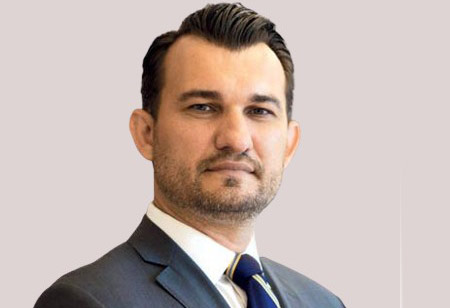Thank you for Subscribing to Healthcare Business Review Weekly Brief

The use of telemetry cardiac monitoring during peak COVID times
Healthcare Business Review
It was early March of 2020 that we began seeing the impact of COVID in this country. New York City was becoming overwhelmed very quickly and the strain on our healthcare system was beginning to show cracks. Our organization was watching the developments very closely and in close contact with the New York State Department of Health. We would begin evaluating our own organizations infrastructure, staffing, technologies and capacity capabilities almost daily by performing gap analyses and checking for vulnerabilities.
As more and more information began to emerge on the needs within hospitals, we learned that to accommodate large volumes of patients, we would need to rethink how to utilize our cardiac telemetry monitoring systems. The technology was designed to monitor our patient’s cardiac rhythm changes both through hard wiring patients to a monitor as well as remote monitoring through a portable telemetry pack. This technology was available in almost every clinical area within our organization but came with limitations. We would quickly run out of monitors and packs if we continued to use this technology the way we have been prior to COVID. Our utilization criteria would quickly exhaust our supply and we would be at risk of not having telemetry available for patients that may be a higher risk for a cardiac event.
As more and more information began to emerge on the needs within hospitals, we learned that to accommodate large volumes of patients, we would need to rethink how to utilize our cardiac telemetry monitoring systems
One of our first steps was to evaluate the total amount of monitors and packs we had available to us. We needed to have a count in order to help determine how the utilization criteria would be adjusted. Our team explored every corner of our organization in order to establish an accurate inventory count. The next step would be to collaborate with our cardiologists, intensivists, and emergency room physicians to reevaluate the utilization criteria for ordering telemetry monitoring.
We would divide the criteria into two tiers, class 1 and Class 2. Class 1 would be required for anyone who needed continuous monitoring while in acute care. The criteria were reviewed and agreed upon with the highest scrutiny in order to maximize this resource. Class 2 criteria were utilized for only 24 hours and pending no changes to the patient’s condition or cardiac rhythm, was then discontinued by nursing staff. Availability of monitors, packs and space on the system was crucial in ensuring that the right patients were under surveillance that the resource remained accessible for anyone who met the agreed upon criteria.
Finally, the Emergency Management Team would meet daily to review our organizations strengths, opportunities, our capacity, resources, and surge level. The team was in constant contact with our clinical leadership including physicians, updating them on changes, and including them in next steps based on what the community needs dictated. We saw great success in a tiered communication system, utilizing small task forces and teams to handle specific challenges then bringing them back to the large group for updates and escalations. Our success with telemetry utilization allowed us to never run out of this resource and remain available for our community throughout the multiple COVID surges.
While COVID impacted our nation’s many Healthcare systems differently, I am confident that the lessons we learned and applied in real time created a stronger internal process. We were able to appreciate that our telemetry system saw as little disruption as safely possible while accommodating large volumes of our community. Reflecting on this experience, our team now has a strong sense of confidence in their ability to critically think, apply best practice standards, and collaborate in order to make real time adjustment that ultimately benefit those we serve every day.









